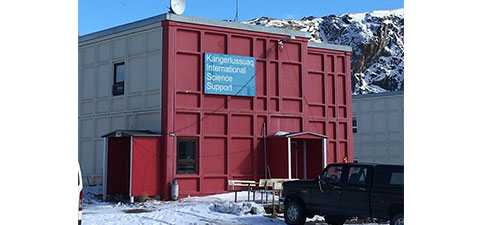12 Apr 2018
Researchers head for Arctic to install dust traps
Arctic researchers are due to spend two-weeks in Greenland installing equipment which will help them understand the impact of dust originating from high latitude, cold regions.
The team is aiming to capture particles of dust that are lifted into the atmosphere by strong Arctic winds. Some of the dust has been trapped within ice for centuries and recently been released by the melting west Greenland ice sheet, other material is recycled from Arctic soils.

The 'lego brick' research station where the team will be working and living
The project, led by Professor Joanna Bullard and Professor John Anderson, of the Department of Geography, is part of a three-year NERC-funded collaborative project with The University of Nottingham and British Geological Survey.
Its aim is to learn how dust in the earth-atmosphere-ocean system affects Arctic ecosystems.
She said: “The aim is to learn just how much dust there is, what it’s made of and where it gets deposited.
“There is now considerable evidence that dust stimulates microbiological activity on the Greenland Ice Sheet ice surface.
"However, there are no comparable studies on how glacial dust influences lakes near the ice margin, despite the knowledge that lakes are hotspots of carbon cycling.”















